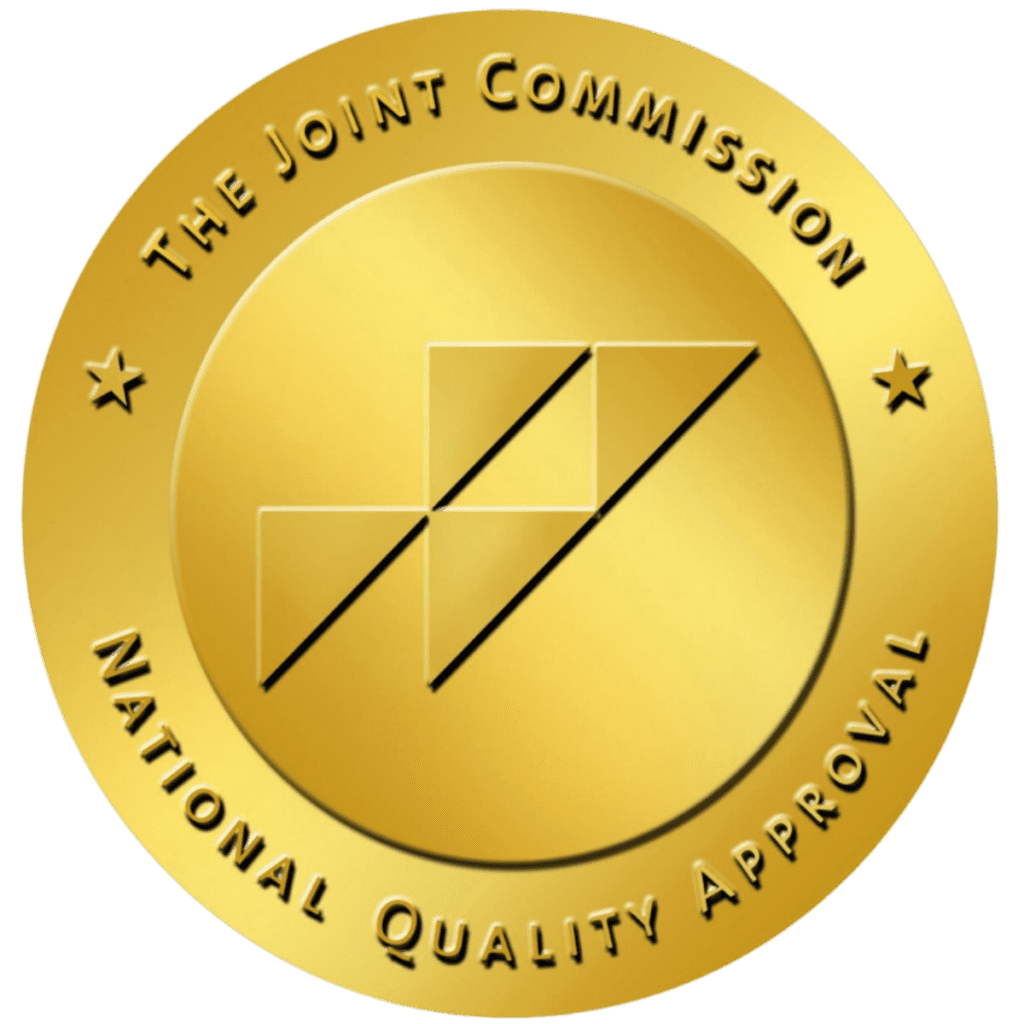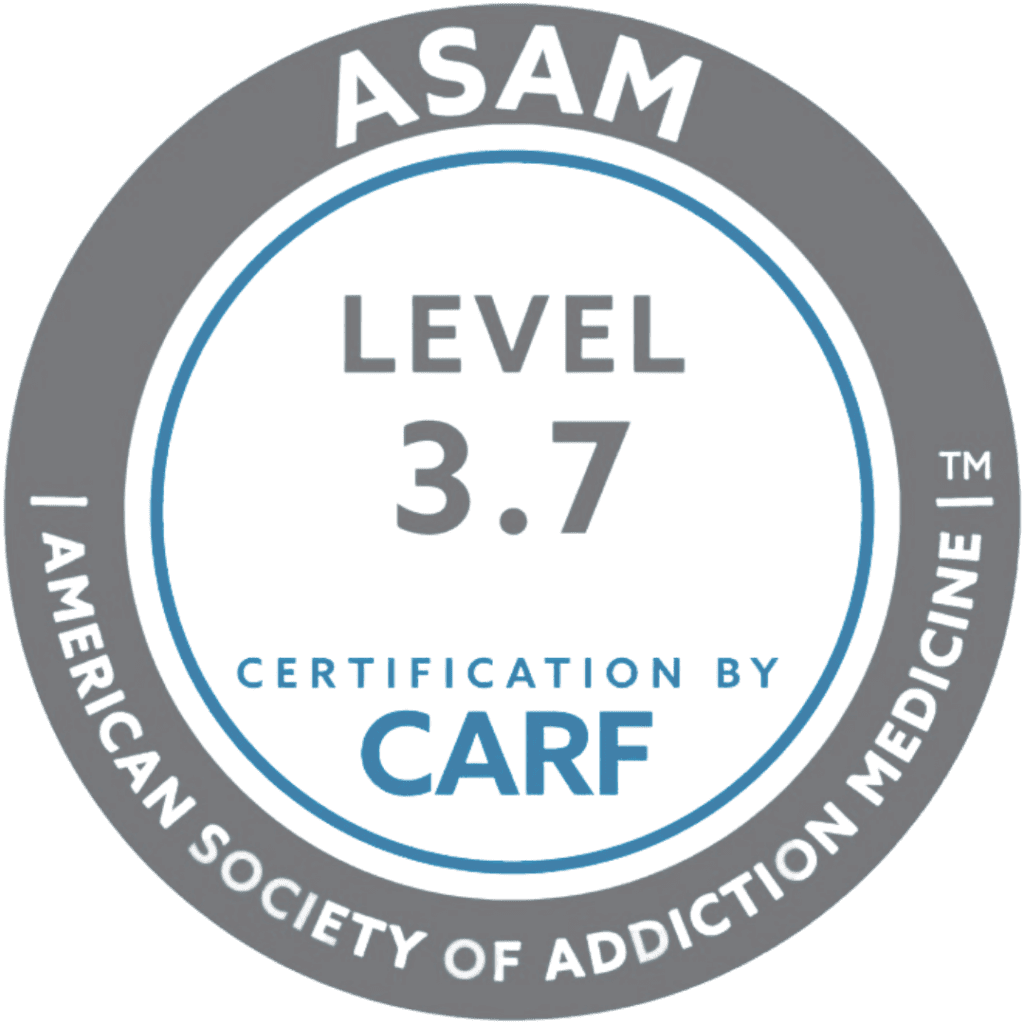Fentanyl is a powerful lab-made opioid that’s 100 times stronger than morphine. It’s FDA-approved to treat severe pain, but it’s also made and distributed illegally. It is one of the most dangerous substances driving the opioid crisis. Its potent effects have led to a concerning trend of misuse, fentanyl addiction, and fatal overdoses. Fentanyl abuse is a serious and potentially life-threatening condition that can have devastating effects on individuals and their loved ones.
People consume fentanyl both knowingly and unknowingly when it’s mixed into or sold as other drugs, such as heroin, cocaine, or counterfeit pills. Many initially encounter fentanyl through legitimate medical channels, but its euphoric effects can lead to misuse. Those with a fentanyl use disorder may engage in uncontrollable use and continue despite the harmful consequences.
Fentanyl abuse can change brain chemistry, leading to tolerance, dependence, and cravings. With fentanyl misuse, the chances for overdose are high, highlighting the importance of prevention, intervention, and recovery. Finding the right help when it comes to fentanyl abuse is the best way to begin the journey toward recovery.
The professional staff at a certified fentanyl treatment facility can provide a variety of therapies and treatment options to set you on the path to a brighter future.
What Is Fentanyl Addiction?
Fentanyl addiction, also known as fentanyl use disorder, is a chronic condition characterized by an irresistible urge to use fentanyl despite its negative effects. Addiction takes hold when repeated fentanyl use triggers changes in the brain’s structure and function. This leads to dangerous drug-seeking behavior.
Fentanyl is often referred to as “synthetic heroin” or “fake oxy”. Some of the common nicknames for fentanyl include “fenty,” “China white,” “apache,” “dance fever,” “TNT,” “murder 8,” and “Tango & Cash.”
People turn to fentanyl for various reasons. Stress, trauma, mental health issues, peer pressure, and social factors can all play a role in fentanyl use. Some people use fentanyl as a way to cope with physical or emotional pain or to relieve stress. Others may initially use it recreationally, enticed by the euphoric sensations it creates. Additionally, some switch to fentanyl after becoming dependent on prescription opioid drugs.
When access to prescription medications becomes limited, some people turn to illegal means, creating a cycle of fentanyl abuse.
Get confidential help from our addiction treatment facilities located across the United States. Call to join one of our quality programs today!
Speak With Our Admissions TeamWhat Are the Signs and Symptoms of Fentanyl Addiction?
Recognizing the signs and symptoms of fentanyl abuse is crucial for early intervention and treatment. From its powerful physical effects to its profound impact on behavior and mental health, fentanyl abuse poses significant challenges that require prompt attention and intervention. By understanding the warning signs associated with fentanyl misuse and dependency, individuals, families, and healthcare providers can take proactive steps to address the issue before it escalates further. Here are some of the most common symptoms of fentanyl use:
Physical:
- Drowsiness
- Slurred speech
- Slowed or shallow breathing
- Constricted Pupils
- Gastrointestinal issues (constipation)
- Nausea and vomiting
- Excessive scratching or itching
Behavioral:
- Doctor shopping to obtain multiple prescriptions
- Stealing or forging prescriptions
- Neglecting responsibilities and obligations
- Secretive or deceptive behavior to conceal drug use
- Social withdrawal
- Increased irritability or erratic behavior
- Decline in performance at work or school
Psychological:
- Intense cravings for Fentanyl
- Preoccupation with obtaining and using the drug
- Cognitive impairments (difficulty concentrating, memory lapses, impaired judgment)
- Mood disturbances (depression, anxiety, agitation)
Identifying these signs early on can facilitate timely intervention and access to appropriate treatment, potentially preventing the progression of addiction and its consequences.
Why Is Fentanyl Dangerous?
Fentanyl is dangerous because of its potency and potential for misuse. Fentanyl is much stronger than other opioids like morphine or heroin. Even small amounts can cause serious respiratory depression, leading to respiratory arrest and death. The strength of the drug also increases the risk of overdose. This risk is heightened when someone’s unaware that they’re consuming fentanyl or when it’s mixed with other substances, such as heroin or cocaine, without their knowledge. Fentanyl also starts working quickly, yet doesn’t last very long. This means someone may take repeated doses before realizing how it will affect them.
Another danger associated with fentanyl is its potential for addiction and dependency. Fentanyl’s impact on the brain’s reward pathways can quickly spark tolerance, dependence, and addiction, even with short-term use. Once fentanyl dependency occurs, the person may prioritize fentanyl use over other aspects of life. Physical and psychological dependence can create financial strain, relationship problems, and health issues. Additionally, attempts to stop or reduce fentanyl use can lead to withdrawal symptoms that make recovery difficult.
"*" indicates required fields
The Dangers of Illegal Fentanyl
Illegal fentanyl presents extreme dangers due to its unpredictable potency and lack of quality control measures. Unlike legal fentanyl, which is managed by the FDA, illegally manufactured fentanyl is produced in laboratories with little to no oversight. As a result, the potency can vary from batch to batch. This makes it challenging for users to determine dosages. The uncertain product increases the risk of accidental overdose, as individuals may consume doses that are much stronger than anticipated without realizing it.
Illegal production also means the drug may be mixed with other substances, such as heroin, cocaine, or other synthetic opioids, without users’ knowledge. This further heightens the risk of overdose and bad reactions. Impure or contaminated materials in the manufacturing process can introduce harmful contaminants and by-products that cause health problems.
The dangers of illegal fentanyl extend beyond individual users to communities and society as a whole. It has contributed to a sharp rise in opioid-related overdoses and deaths across the globe. Its potent effects, coupled with its widespread availability and affordability, have made it an attractive option for drug dealers and users alike. Law enforcement efforts, harm-reduction strategies, expanded access to addiction treatment and support services, and awareness campaigns are required to make headway in the fight.
Fentanyl Addiction Facts & Statistics
Fentanyl is now the leading cause of overdose deaths in the United States, surpassing both prescription opioids and heroin.
Over 136 people die every day from opioid overdoses related to synthetic opioids like fentanyl.
CDC data reveals that Ohio, West Virginia, and New Hampshire have been particularly hard hit by the fentanyl epidemic, with overdose death rates well above the national average
NIDA research indicates that socioeconomic factors, including lack of access to healthcare, stable housing, and employment opportunities, contribute to fentanyl misuse and overdose
The Link Between Fentanyl Abuse and Mental Health Disorders
Some people turn to fentanyl to alleviate their mental health struggles. For others, drugs like fentanyl create mental health issues that were never there before. Suppose someone is struggling with anxiety and depression before experimenting with fentanyl. In that case, there’s a good chance those mental health challenges will continue, and even worsen, with fentanyl abuse.
For many individuals, fentanyl becomes a form of self-medication, temporarily relieving emotional pain or distress. They use the drug as a coping mechanism to numb their feelings or escape from reality. Unfortunately, the relief is often short-lived and accompanied by other consequences, like changes in mood, cognition, and behavior, as well as psychosis.
A drug and alcohol treatment center with a dual diagnosis treatment program for fentanyl addiction can help address these new or underlying mental health issues. Dual diagnosis is a treatment approach that considers both conditions for a well-rounded approach to healing.
When Do You Need Fentanyl Addiction Treatment?
Recognizing the need for fentanyl addiction treatment can be challenging. Addiction often progresses gradually, with individuals sometimes unaware of the extent of their dependence. That said, several things can indicate that professional treatment for fentanyl abuse is needed. Some general signs include:
- Finding yourself unable to control your use of fentanyl despite wanting to cut down or stop.
- Cravings for fentanyl that interfere with your ability to function in daily life or maintain responsibilities at work, school, or home.
- Withdrawal symptoms when you try to reduce or stop using fentanyl, such as nausea, sweating, agitation, or intense cravings.
- Deteriorating physical health, such as weight loss, chronic fatigue, respiratory problems, or infections related to injection drug use.
- Worsening mental health issues, such as depression, anxiety, or trauma-related symptoms.
- Strained relationships, legal problems, financial difficulties, or social isolation resulting from fentanyl addiction.
Seeking treatment for fentanyl addiction can help individuals address underlying issues, rebuild their lives, and develop healthy coping mechanisms.
How Long Is Fentanyl Addiction Treatment?
When it comes to drug rehab, no two experiences are alike. The duration of fentanyl treatment varies by individual needs, severity of addiction, and response to treatment. Generally, it’s a long-term process that involves levels of care that address physical, psychological, and social aspects of addiction.
Detox and inpatient care can last anywhere from 30 to 45 days, followed by outpatient programming, which can span weeks or months. Everyone’s journey is different, so it’s important to set attainable goals for yourself with help from your treatment team.
Fentanyl Detox
Initially, individuals undergo detoxification to rid the body of fentanyl and manage withdrawal symptoms safely. Detox typically lasts for a few days to a week, depending on the level of dependence and overall health. Fentanyl withdrawal symptoms, such as nausea, anxiety, agitation, insomnia, and mood swings, can make the process seem daunting. Having detox specialists by your side during detox can be very helpful.
Medication-assisted treatment (MAT) during detox involves the use of FDA-approved medications, such as buprenorphine, methadone, or naltrexone, in combination with behavioral therapies to manage cravings, reduce withdrawal symptoms, and prevent relapse. MAT can benefit those with opioid use disorder, including fentanyl addiction, as it helps stabilize brain chemistry and improve treatment outcomes. MAT is often part of residential or outpatient treatment programs and may be continued as part of aftercare or maintenance therapy.
Other therapies like counseling and cognitive-behavioral therapy (CBT) help someone learn coping mechanisms to prevent relapse.
Inpatient Fentanyl Rehab
Residential rehabilitation programs, also known as inpatient treatment, typically last 30 to 90 days. More extended stays may be recommended for those with more severe addiction or co-occurring mental health disorders. During residential treatment, clients receive intensive therapy, counseling, and support in a structured environment away from triggers and temptations associated with drug use.
Therapies generally fall into two categories: evidence-based and holistic. Evidence-based treatments like CBT, dialectical behavior therapy (DBT), individual counseling, and group therapy are proven effective when used to treat fentanyl misuse.
Holistic treatments aim to add an aspect of well-rounded healing. Activities like yoga, meditation, sound healing, nutrition counseling, and adventure therapy help facilitate lifestyle changes that can aid in long-term sobriety.
Outpatient Fentanyl Rehab
Outpatient programs offer more flexibility in terms of treatment scheduling. Clients attend treatment at a facility while living at home or in sober living residences. They attend therapy sessions and support groups on a part-time basis. Outpatient fentanyl abuse treatment has a few different levels.
Partial hospitalization programs are the most intensive outpatient treatment option. They involve someone attending therapy on a daily basis. Intensive outpatient treatment and traditional outpatient care involve less time spent at the facility and more time using the skills learned in treatment to support long-term sobriety.
Depending on progress and treatment goals, outpatient treatment can range from a few weeks to several months or longer. Many of the same treatments and therapies used during inpatient care are also used during outpatient treatment for fentanyl abuse.
Aftercare
After completing treatment, individuals are encouraged to continue with aftercare or ongoing support services to maintain sobriety and prevent relapse. Aftercare may include participation in support groups, outpatient therapy sessions, medication-assisted treatment, vocational training, and other supportive services promoting long-term recovery.
Aftercare may also include spending time living in a sober home or community where peers support each other while bettering themselves. It offers a chance to use the skills and coping mechanisms learned in recovery to prevent falling back into the same patterns of drug or alcohol abuse.
Are you ready to leave drugs & alcohol in your past? Reach out today through live chat, email, or phone.
Addiction Treatment Programs at Aliya Health Group
At Aliya Health Group, we strive to provide comprehensive and effective fentanyl abuse treatment that takes a person-centered approach to the recovery process. Our substance abuse treatment centers offer a full continuum of care that ensures you receive the extensive support you need throughout every stage of your recovery. At each step of the treatment process, you will have access to a variety of traditional treatment services and therapies alongside holistic wellness services to address every aspect of your addiction and any co-occurring disorders.
We have covered all your needs, from our inpatient and outpatient programs to continuing care options and alumni programs. Each level of care at our facilities can support you in developing healthy coping techniques and life skills, building relapse-prevention plans, and accessing other helpful resources. With our help, you can maintain your sobriety and sense of well-being long into the future. Substance use disorders don’t have to control your life any longer. We can help.
Call us today at (888) 973-2078 to get started.











